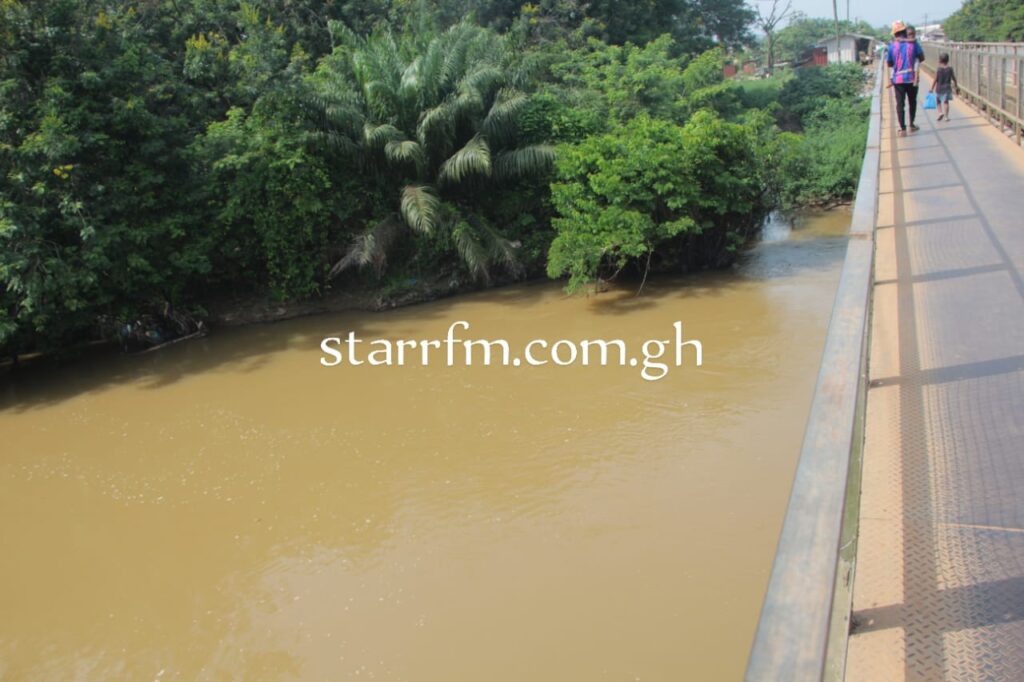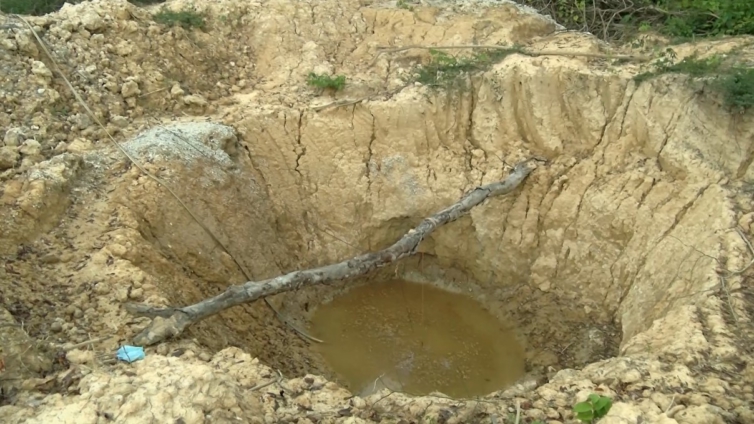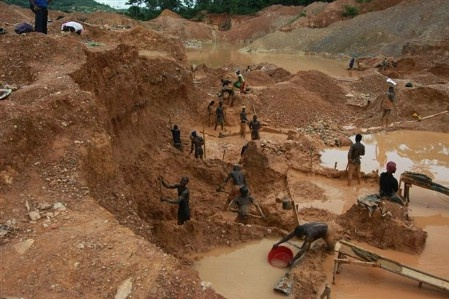Illegal small-scale mining has for the past two decades been a major driving force of socio-environmental destruction and natural resources depletion in Ghana and the year 2022 is no different in terms of the scale of destruction, especially in water bodies.
Popularly known as galamsey, it is the biggest enigma in Ghana as the government has woefully failed to provide a lasting solution despite attempts to eradicate the phenomenon through the implementation of strategies like the inter-ministerial task force and the introduction of community mining schemes.
Very often government officials would mount any available stage or platform to claim victory in the fight against illegal mining or give assurance about fighting it.
See some of the assurances by the government to fight illegal mining: https://citinewsroom.com/2022/10/im-determined-to-win-fight-against-galamsey-nana-addo/
https://ghenvironment.com/Environment_Sanitation/galamsey-fight-govt-gives-deadline-for-registration-of-all-excavators1666638609
https://ghenvironment.com/Environment_Sanitation/land-ministry-reviews-strategy-to-tackle-illegal-mining1663353258
https://ghenvironment.com/Environment_Sanitation/galamsey-government-will-end-activities-of-illegal-miners-akufo-addo-assures-again1654558499
Typical of such lip services in the fight against illegal mining is the assurance by President Akufo Addo in June 2022 that, the government will end activities of illegal miners in the country.
Speaking at a gathering to commission 100 Mercury-free mining equipment named ‘Gold Kacha’, a technology that addresses concerns over responsible mining, President Akufo-Addo said it was necessary to halt the trend of illegal mining in the country’s water bodies.
“To help protect the environment we had to take far-reaching measures such as involving the Police and Military in ‘Operation Halt’ as well as decommissioning and demobilising machines and equipment used for illegal mining in the forest reserve and water bodies which have been designated red zones for mining.
“They were necessary to halt and reverse the trend of ever-increasing turbidity of our waters and the continuing degradation of our lands and to safeguard our environment for posterity,” he noted.
But the reality on the grounds paints a bleak picture of Ghana’s fight against illegal mining.
For instance, most of the rivers serving as sources of drinking water in some parts of the country have been completely destroyed.
Birim River in the Eastern Region for example is heavily polluted, depriving residents in nearby communities of a source of fresh water and putting at risk the lives of over five million other people in major cities in the south whose potable water is sourced from the river.
Ankobra, Pra, and the Bonsa rivers have all been heavily polluted and the main culprit is galamsey.
The Ghana Water Company Limited (GWCL) is lamenting the cost involved in treating water bodies due to the negative impact of mining. The company says it is currently burdened by huge sums of monies spent on chemicals to treat high turbidity levels of raw water at various extraction stations.
Addressing a gathering in Koforidua on Tuesday, September 13, 2022, the Communications Manager of Ghana Water Company Limited, Stanley Martey said, mining has become an impediment to the operations of the company.
Speaking to journalists at Nyinahini in the Ashanti in October 2022, the Managing Director of GWCL, Clifford Braimah also confirmed that, the continuous destruction of water bodies through illegal mining was increasing the cost of water due to the rising cost of aluminum sulphate used for the treatment.
According to the Managing Director, the volume of water supply to the people has reduced because about 50 per cent of the water is thrown out for the high level of salinity instead of the usual 5 per cent.
He mentioned that managing their machines has also become a problem which has always compelled them to stop and maintain them regularly.
Unable to withstand the current closure of the treatment plant at Kyebi in the Eastern Region by the GWCL due to high turbidity as a result of the continuous pollution of river Birim by illegal miners, the Okyenhene, Osagyefo Amoatia Ofori Panin II in November 2022 called for the immediate arrest of illegal miners operating in Kyebi and its environs.
The Overlord of the Akyem Abuakwa State added that the recklessness of illegal miners who are mining day and night in the Birim river is posing a health risk to all residents in the enclave. He described the illegal miners as criminals who must be arrested by the IGP and the Ghana Police Service to face prosecution.

File Photo (polluted river)
The depletion of forests
The mining resource curse is not only affecting Ghana’s water bodies but also its rich forest reserves.
In 1901, Ghana’s total forest reserve cover stood at 8.2 million hectares but is now estimated to be less than 1.6 million hectares according to the Forestry Commission. The rate of deforestation based on the trend has been pegged at an unsustainably high rate of 65,000 hectares per annum.
Between 2015 and 2018, galamsey-driven deforestation increased from 13,456 hectares to 29,275 hectares. As of 2018, the total extent of forest degradation in protected forest reserves affected by galamsey was about 1058 ha. This is according to data from the Centre for Remote Sensing and Geographic Information Services (CERSGIS).
The 2022 data though not currently available is expected to be higher as the subscribed ghenvironment daily forest change alert powered by the Global Forest Watch points to worrying but not surprising statistics by the end of the year. Titled Deforestation Alerts detected in Ghana, it reported that, between 16th December 2022 to 23rd December 2022, there were 11729 total deforestation alerts in Ghana and this occurred in the primary forest reserves of the country.
The Tano Nimiri, Tano-Offin, Numiri, Kobro, Oda, Jimira, and Atewa forests, including many others in the Ahafo, Western, Ashanti, and Eastern regions have all suffered from the illegality.
Given the prevailing rate of deforestation, it is estimated that there will be no natural forest in Ghana by the year 2035.
Recent documentary by Luv FM’s Erastus Asare Donkor showed how some mining companies are causing havoc in the country’s forest reserves with impunity.
His investigations uncovered that forest cover running over 12 football fields has already been destroyed by mining linked to Akonta Mining Limited owned by Bernard Antwi Boasiako popularly called Chairman Wontumi, the Ashanti Regional Chairman of the ruling New Patriotic Party.
Despite the overwhelming evidence that, the company mined in the forest reserves without a licence, the government has failed to prosecute anyone.
Public health issues
There is no evidence to suggest that exploration of Ghana’s gold resources has helped in fighting widespread poverty but research continue to show that, mining is fast posing a health risk to members of the public.
In October 2022, a forensic pathologist and Head of KNUST School of Medicine and Dentistry, Dr. Paul Ossei Sampene said he was concerned about the recorded cases of newborn babies with deformities in mining communities.
Speaking to GHOne News, the pathologist observed that illegal mining activities which continue to contaminate food crops and river bodies have far-reaching consequences on human health, partly why the country’s health facilities are overwhelmed by strange diseases and defects in births.
He stressed that, the heavy concentration of metallic substances found in river bodies is worrying.
“We need to appreciate the fact that cumulatively if these patients get even 0.005% of heavy metal, and assuming the person stays there all his life you can imagine the sort of concentration that you can get in a year or in a month, and that is what we should consider. When you live there permanently, that is your place of abode and consume whatever is produced there, you drink the water there and eat the food there, cumulatively it can affect your life. And we need to take action. If care is not taken in the near future, we need to import food.”
“Newborn babies with deformities, and kidney failure, among others, are on the rise as a result of the intake of polluted water and consumption of food crops in mining areas, the pathologist observed, adding “Per my particular examinations of people that have passed on at certain areas seem to be telling me that there is a lot of heavy metal pollution in our food chain which has found its way into the body of the human”.
“The gastrointestinal tract which we call GIT per our medical term is one of the things that is affected when you consume these heavy metals. I did one work by using the placenta and looking at it I think is alarming. Even though I haven’t been able to do more of these things nationwide, but I think that if we allow it to continue, we will be in a position where in the near future we’ll get a lot of babies with deformities.
“Some of them fortunately the deformities are not compatible with life and so some of them just die immediately after birth. But if you’re not careful and you survive it, you might have somebody with an internal organ deformity.”
Ashanti Region records 27 tragic illegal mining cases
The Ashanti Region has recorded 27 tragic cases of residents in mining areas falling and dying in abandoned galamsey pits as of December 22, 2022.
The Regional National Disaster Management Organization in an interview with JoyNews said that these galamsey-related deaths involved women and children returning or going to their farms.
The Regional NADMO Director, Frank Kwadwo Duodu told Erastus Asare Donkor that his outfit is drawing a plan to reclaim parts of the affected areas to be used for farming activities in 2023.
He also called for legislation to empower NADMO to be able to demolish structures contributing to flooding in the country.
Many parts of the Amansie Central municipality and communities along the Offin River have been turned into wastelands and death traps of abandoned pits and gullies.

File Photo (abandoned mining pit)
According to the regional NADMO office, they recorded 27 illegal mining-related mine cave-ins and drowning in abandoned pits.
They noted that many of the cases involved women and children.
There is a deliberate unwillingness to fight galamsey
The Director of the Faculty of Academic Affairs & Research at the Kofi Annan International Peacekeeping Training Centre (KAIPTC) on 3rd October 2022 observed that there is an unwillingness amongst authorities to clamp down on illegal mining.
According to Prof. Kwesi Aning, companies and their leadership and ownership engaging in galamsey are well known in the country however, the state has turned a blind eye to their actions.
Thus, allowing these ‘crook’ individuals to operate unconcerned about the detrimental effect the activity is having on the country and its people.
Prof Aning was reacting to JoyNews’ Hotline Documentary, Destruction for Gold on Joy FM’s Super Morning Show.
“There is the lacunae between the flowery rhetoric of representatives of the state of Ghana and their unwillingness and it is not about capacity, this is a deliberate unwillingness to respond to this challenge.
He concluded “So we initiate inter-ministerial groups, multiple joint campaigns by statutory security forces and they don’t go anywhere and they will not go anywhere until we are bold enough to strip bare the individuals and crooks involved.”
Citation.
myjoyonline.com, starrfm.co.gh, ghanaiantimesonline.com
 File Photo (polluted river)
File Photo (polluted river)
 File Photo (abandoned mining pit)
File Photo (abandoned mining pit)


 File Photo
File Photo

Elizabeth
December 31, 2022